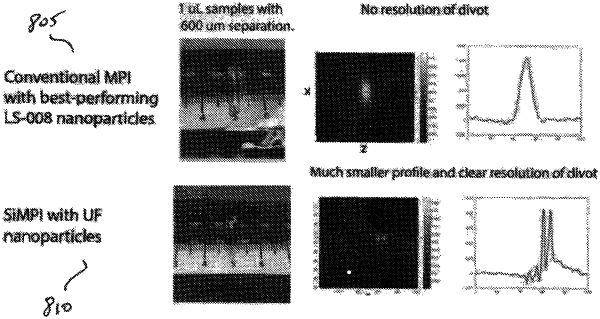| CPC G01R 33/1276 (2013.01) [A61B 5/0515 (2013.01)] | 20 Claims |

|
1. A strongly-interacting magnetic particle imaging system, comprising:
a magnetic field generating system comprising at least one magnet, the magnetic field generating system providing:
a gradient magnetic field within an observation region of the magnetic particle imaging system such that the gradient magnetic field will have a dynamic field-free region (FFR) for an object under observation having strongly-interacting magnetic particles distributed therein; and
a drive field plus a slow shift field that dynamically shifts the FFR across a field of view (FOV) or partial FOV (pFOV) within the observation region, where a trajectory of the drive field accommodates for a coercivity of the strongly-interacting magnetic particles by ensuring that the strongly-interacting magnetic particles in the FOV or pFOV are saturated to a full coercivity field substantially immediately prior to traversing to an opposite-polarity of coercivity;
a detection system arranged proximate the observation region, the detection system being configured to detect an induction signal from the strongly-interacting magnetic particles to provide a detection signal; and
a signal processor in communication with the detection system, wherein the processor is configured to:
receive the detection signal from the detection system;
process the detection signal to remove a coercivity shift due to the coercivity of the strongly-interacting magnetic particles; and
convert the processed detection signal into an image of the strongly-interacting magnetic particles.
|